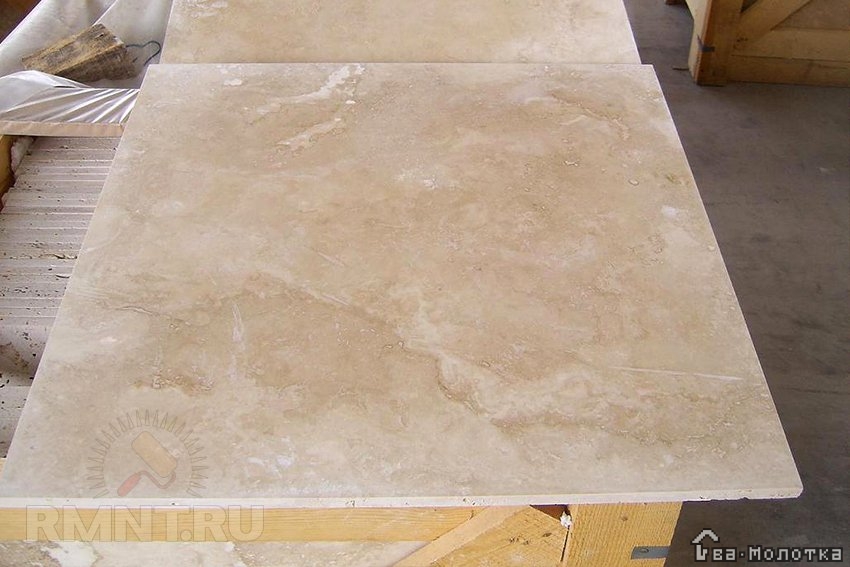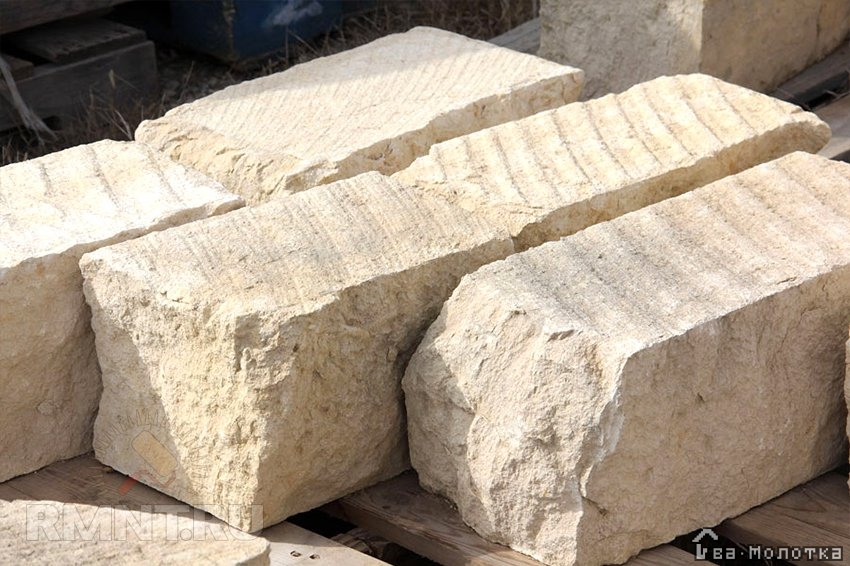The use of natural stone in construction – travertine, quartzite and limestone

TRAVERTINE
Another name for the “stone from Tibur”. A calcareous tuff formed by calcium carbonate. A porous, nodular stone of low density. Its base colour is light, ranging from dark-white to grayish. It may have yellow, brown or brownish tinges.

Application
Wall cladding indoors at a height above ground level. Floor cladding in dry areas. Earlier (more than 100 years ago) travertine was used for exterior cladding. The well-known Coliseum in Rome was finished with this stone. But later it was found out that it is chemically unstable and easily damaged by acids and exhaust gases from cars. Today, travertine is no longer used in the exterior, where it can successfully be imitated by ordinary concrete.
Advantages:
- Resistant to abrasion
- wide range of appearance (stripes, fogs, pure colour)
- Low bulk weight of 1,500-1,800 kg/m3
- No special glue required
- Well amenable to processing
Disadvantages:
- Low shore hardness 1.5-1.8.
- Chemical instability.
- Interior use only.
QUARTZITE
A rock composed mainly of white, gray or pink quartz. It is found in Russia and China. It has a sparkling, shiny appearance. Belongs to substances that are hard to be machine-processed; high-quality polishing is predominantly applied.

Application
Religious and representative structures – temples, palaces. Manufacture of acid-proof houseware, containers, and fire-resistant structures. Manufacture of abrasives. In metallurgy it is used as a flux.
Advantages:
- Compressive strength is higher than that of granite – 400-450 kPa (4-4.5 by Shore) at volumetric weight of 2600 kg/m3.
- Attractive appearance.
- Durability. The first signs of destruction occur no sooner than after 200 years.
- Low radioactive capacity. Refers to Class 1 building materials (100-190 Bq/kg).
Disadvantages:
- Difficult processing, difficult to make precise-shaped pieces.
- Small distribution area. It often has to be imported from abroad.
LIMESTONE
Is also called shell rock. A rock of organic origin, comprising shells of prehistoric marine animals, molluscs. In the process of metamorphism the structure of the crystal lattice changes and it turns into marble. The colour is predominantly light grey, but can have many different monotonous shades, depending on the region of extraction.

Application
This rock can be roughly divided into two categories:
– hard (2.5-3 Shore) – it is used to make crushed stone for road works, sculptures and carvings;
– soft (1.5-2.5 Shore) – limestone is crushed to make lime, or used to make tiles for interior work.
Advantages: huge mass of occurrence and distribution. It can be mined literally anywhere in the world. Hence the wide range of colours and textures.
Drawback: weak limestone reacts with water, solutions, acids.
Interesting fact. There is a suggestion that its Russian name izvestniak was created by analogy with the word “well-known” (izvestnyi), i.e. common.
Summary table of the characteristics of the stone
Summary chart for individual types of stone
| Name | Volumetric weight, kg/m3 | Compressive strength, MPa | Note | Price |
| Granit | 2800-3000 | 3 | Finishing plates 20 mm without grinding | From 65 USD/m2 |
| Marble chips | 2500-3000 | 2,5-3 | Chips in bags 50 kg | From 1,5 USD/bag |
| Onyx | 2500 | 6-7 | Plate | From 1500 USD/ m2 |
| Travertine | 1500-1800 | 1,5-1,8 | Tiles 20 mm thick | From 8 USD/m2 |
| Quartzite | 2600 | 4-4,5 | Chipped stone, boulder, crushed stone | From 80 USD/ton |
| Limestone | 1500-2000 | Up to 3 | Crushed stone | 53 USD/ton |
Finishing with natural stone is a unique and refined solution that will last for many years and even centuries. These materials are not prone to time. On the contrary, they increase in value and new meaning over the years.
Source: dvamolotka.ru
